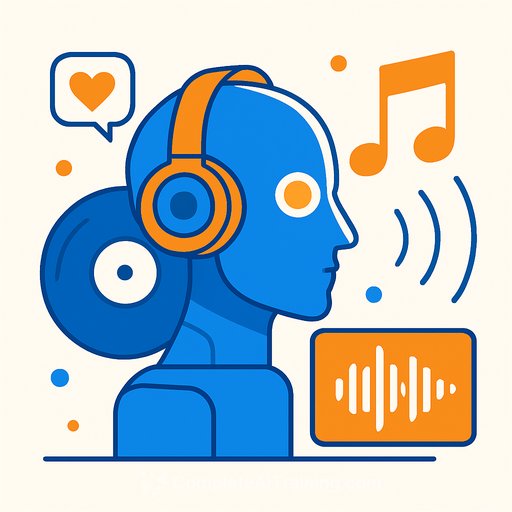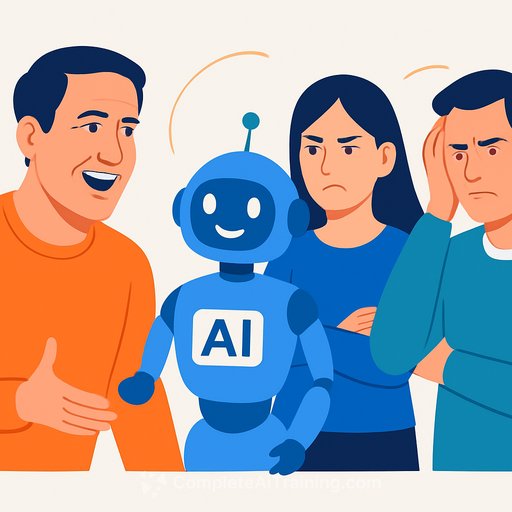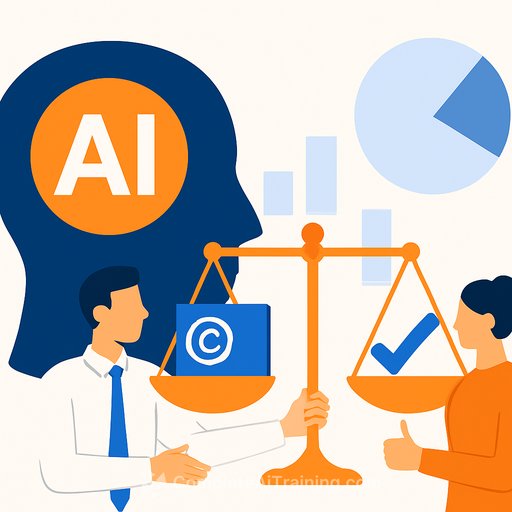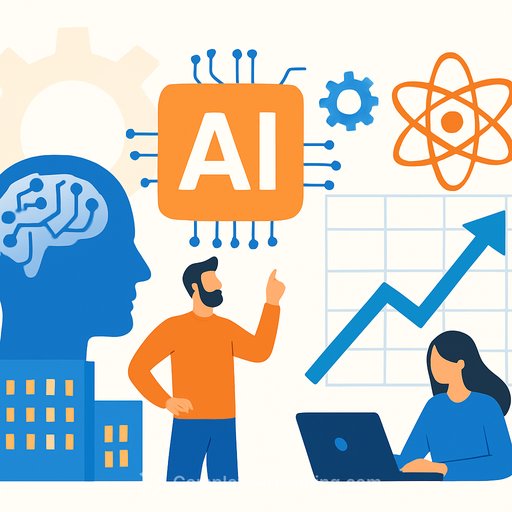Artists vs. Algorithms: The Music Industry's Next Move
Picture this: a back room at an exclusive club. Executives trade complaints over 40-year-old scotch - artists are "difficult," fans are "ungrateful," and virality should be as simple as a light switch. Then someone raises a glass and says the quiet part out loud: "We've finally taken the artist out of art."
That scene isn't fiction for long. It's a preview.
AI just stepped onto the charts - without a pulse
An AI entity called Xania Monet reportedly debuted on the Billboard Radio Airplay Chart. It doesn't eat, sleep, argue, or split royalties. It scales, posts endlessly, and never burns out. And it's already pulling attention (and money) away from humans.
That's not an edge case - it's a signal. Expect more of it.
Labels and AI companies are aligning - fast
Universal Music Group reached a deal with Udio, an AI platform that spins up full songs from text prompts. Lawsuits about scraping and training data got ironed out, and a joint "creation, consumption, and streaming" service is slated for 2026. Translation: the biggest label on earth plans to feed catalogs into machines that manufacture artists on demand, with "compensation" language baked into the license terms.
The precedent is clear. Others will follow. A new template for "legalized" AI training is here, and opt-ins will get complicated - for artists, writers, producers, and publishers.
UMG press updates will be worth watching.
Fans say they value human creativity. Their bodies disagree
Surveys keep repeating the same line: people want human-made music. But biometric studies comparing reactions to AI-generated music and human-composed music show something uncomfortable. Many subjects respond almost the same. In some cases, AI tracks score higher on arousal while human tracks just feel more familiar.
If you're a creative, that matters. It means "I can feel the difference" won't keep your rent paid. You need leverage outside the file.
The hard truth for working creatives
AI won't replace music. It will replace the average supply of it. The time tax of mastering instruments, writing, arranging, recording, and mixing - that moat is collapsing. The market is about to be flooded with decent tracks that never get tired.
That hits everyone: musicians, producers, engineers, teachers, studios, instrument makers. The economics bend toward volume, speed, and margins. And the old middle gets squeezed.
The Creative Playbook: Keep the art human, use AI for the laundry
Here's a practical path that preserves your voice and keeps your business alive.
- Draw your line in contracts. Add explicit "no AI training" clauses for your masters, stems, and voice. Require written approval for model fine-tuning or cloning.
- Metadata or it didn't happen. Embed creator IDs, session info, ISRC/ISWC, and AI-use disclosures in every file. Register with your PRO and distributors accurately. You'll thank yourself during audits and disputes.
- Sell the human signal. Live shows, behind-the-scenes sessions, raw takes, process notes, real-time feedback loops. People pay for proximity and story. Make that your moat.
- Label your humanity. Publish "human-made" or "human-led" badges with proof-of-process (session footage, project files, dated drafts). Trust will become currency.
- Use AI to ship faster - not to replace your taste. Rapid demos, arrangement sketches, alt-mixes, visual assets, admin tasks. Keep your judgment sacred. Offload the busywork.
- Protect your voice and likeness. Watermark stems. Track unauthorized clones. File takedowns fast. Consider identity verification services before you need them.
- Diversify beyond the track. Sample packs, lesson packs, songwriting sprints, memberships, private Discords, VIP drops, micro-licensing, sync briefs. Build recurring income that doesn't depend on algorithms alone.
- Own direct channels. Email list, SMS, community hub, fan club. Social reach is borrowed. Distribution is survival.
- Run experiments. A/B test human-only vs. AI-assisted releases. Track which pieces actually drive saves, watch time, comments, and sales. Keep what works. Drop the rest.
- Collectively negotiate. Join guilds, unions, and advocacy groups pushing for consent, credit, and fair pay. One artist can be ignored. Thousands can't.
What to watch next
- Licensing models: Opt-in vs. opt-out training. Rate cards for voice and style. Audit rights.
- Platform labels: Clear tags for AI-generated, AI-assisted, and human-made. Penalties for mislabeling.
- Clone rules: Consent standards for voice models and lookalike avatars. Fast-track takedowns.
- PRO policies: Registration rules for AI-assisted works. Splits, disclosures, and performance reporting.
- Fan trust: Whether audiences reward authenticity signals or just reward output.
The bottom line
AI is here to do the grunt work at scale. Let it.
Your edge is taste, story, presence, and proof you're real. Build moats around those. Use AI to clear the table so you have more time to make art - not to hand the art away.
Skill up without losing your voice
If you want structured, practical ways to plug AI into your workflow without gutting your identity, here are curated options for creatives:
- AI courses by job - pick workflows that fit musicians, producers, and content creators.
- Prompt engineering essentials - get better outputs in less time, without losing your taste.
Your membership also unlocks:






